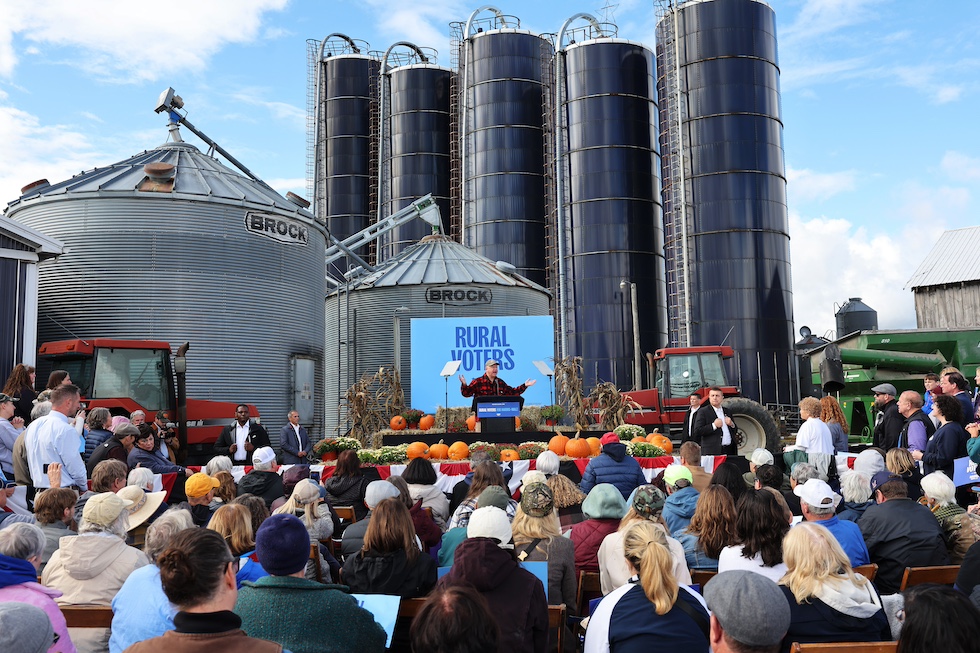In the US presidential elections scheduled for next November 5, Pennsylvania is considered the most important of the seven swing states: it is also the state that Democratic candidate Kamala Harris cannot afford to lose, without compromising her chance of becoming president. That's why, in recent weeks, Harris and her Republican rival, Donald Trump, have devoted a lot of time to Pennsylvania, where their committees organize daily rallies, fundraisers and door-to-door activities, and spend huge sums to run their commercials. On television and on social media.
In these elections, the swing states, that is, those in which the two candidates are very close at the ballot boxes and whose outcome will determine the final outcome, are North Carolina, Arizona, Georgia, Nevada, Wisconsin, Michigan, and Pennsylvania. The latter is the most populous and therefore offers the largest number of voters, 19.
Under the American electoral system, to become president, you must win enough states to garner at least 270 electors. Pennsylvania It is often defined It is recognized by pollsters and experts as a “tipping point state,” that is, a state that is likely to determine the outcome of the election by appointing the winning candidate to the voters who will allow him to reach the electoral threshold.
Between January 1, 2023 and October 8, Harris' campaign and various Democratic Party fundraising organizations (so-called “Super PACs”) spent 180 million dollars In advertising in Pennsylvania: the highest number ever among all the swing states, and even higher than Georgia and Wisconsin combined, for example. By contrast, Republicans spent $170 million, and the numbers will continue to increase through November 5th.
Democratic presidential candidate Kamala Harris at a rally in Erie, Pennsylvania (Michael M. Santiago/Getty Images)
Both Harris and Trump frequently visit different counties in the state. A few days ago, for example, Harris organized a rally in Chester County with Liz Cheney, the daughter of former Vice President Dick Cheney and a well-known GOP representative, but decided to support her.
It is also the state where, last July, Harris announced that her vice presidential nominee would be Tim Walz. In previous weeks, there was much talk about the possibility that Harris would choose Democratic Pennsylvania Governor Josh Shapiro, who is considered a very competent moderate and able to win the approval of even conservative voters. However, he was eventually excluded for various reasons, including a lack of personal closeness with Harris. Shapiro stands anyway continuous To campaign for Harris, along with Democratic governors from other swing states.
But a few days ago, Trump visited a McDonald's restaurant in Westerville-Trevose, also in Pennsylvania, where he wore an apron and served French fries (the place was closed to the public for the event). Also in Pennsylvania, on October 14, Trump decided to interrupt a march to listen to music and dance on the stage for about half an hour, in a very irregular manner.

Donald Trump serves French fries at a McDonald's restaurant in Pennsylvania (Doug Mills/New York Times via AP)
In Butler, in the central western part of Pennsylvania, on July 13, a twenty-year-old boy shot Trump during a rally, sustaining minor wounds in his right ear and killing one person in the audience. On October 5, exactly one month before the elections, Trump returned to Butler to hold another gathering in the company of businessman Elon Musk, the owner of Tesla and SpaceX and the owner of the social media network, their main supporters.
– Read also: Elon Musk is doing everything he can to win for Donald Trump
Currently, Pennsylvania polls show a close tie between Harris and Trump. This is partly due to the state's demographics, which show up often ID As a “microcosm” and reflects the heterogeneity of American society.
second The last censusAs of 2020, just over 13 million people live in Pennsylvania. About 10% of the population is black, 8% is of Latin American descent, and 4% is Asian: these are demographic segments that traditionally vote majority for the Democratic Party, but in recent years have been moving to the right, moving closer to the Democratic Party. Republicans. The state has large urban centers like Pittsburgh and Philadelphia, where Democrats have won for decades, but also… Rural areas Which favors Republicans.

Democratic Vice Presidential Candidate Tim Walz at a rally in Tillitz Farms, Pennsylvania (Michael M. Santiago/Getty Images)
1992 to 2020 presidential elections in Pennsylvania They always won Democrats, with one exception: 2016, when Trump (who was also a candidate eight years earlier) won all three so-called “blue wall” states, Pennsylvania, Wisconsin and Michigan, and became president. In 2020, Democratic candidate and outgoing President Joe Biden won Pennsylvania with 50.01 percent of the vote, while Trump received 48.84 percent.
In recent months, Pennsylvanians — especially those who belong to certain demographic groups considered competitive, such as blacks or young people — have been receiving a large number of messages on their cell phones, emails and phone calls, and seeing election ads on television and social media. Volunteers knock on their doors to convince them to vote for one candidate or another. “I was born in Pennsylvania and have lived here through many elections […] “But I've never seen anything like what's happening this fall.” He said the New York Times Christopher Borick is a professor of political science at Muhlenberg College in Allentown.

“Reader. Travel maven. Student. Passionate tv junkie. Internet ninja. Twitter advocate. Web nerd. Bacon buff.”

